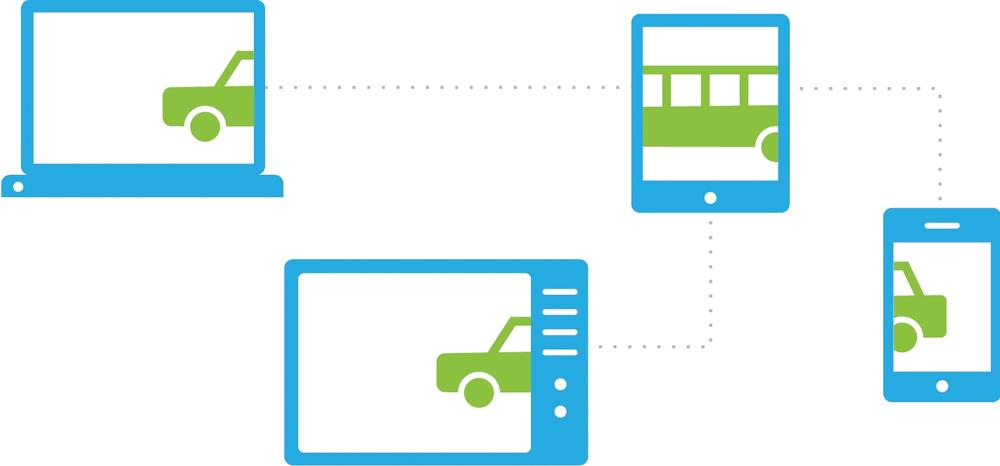Chapter 3. The Continuous Design Approach
With continuous design, the second approach in our 3Cs framework, the multi-device experience flows from one device to the next. It is the experience that accompanies the user in his set of activities, within different contexts, en route to his information or entertainment goal. In the following set of examples, we’ll look at the principles of this approach, as well as its use cases, design lessons, and main benefits to users.
What Is Continuous Design?
Continuous design addresses a user flow that runs along a set of contexts, during which devices “pass the baton” to one another until the user reaches her information goal or completes the desired activity (see Figure 3-1).

There are two chief experience types that continuous design addresses:
- Single activity flow
A single activity—reading a book, watching a movie, or writing a document—typically requires a significant period of time to complete. These kinds of activities, therefore, tend to progress through several contexts (e.g., a laundromat, the airport, or a coffee shop line). And they include the opportunity for a user to use different devices (e.g., an iPad at the laundromat, laptop ...
Get Designing Multi-Device Experiences now with the O’Reilly learning platform.
O’Reilly members experience books, live events, courses curated by job role, and more from O’Reilly and nearly 200 top publishers.

